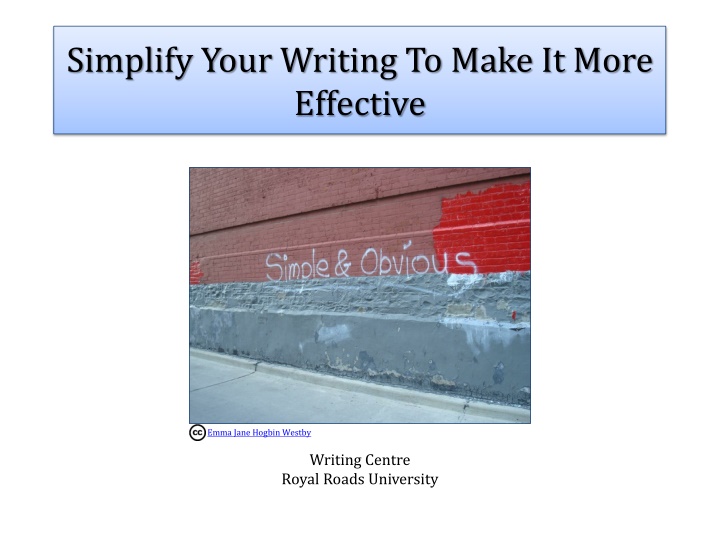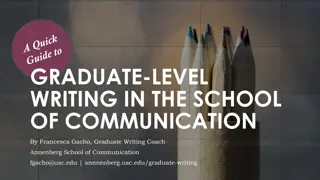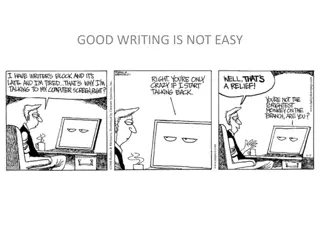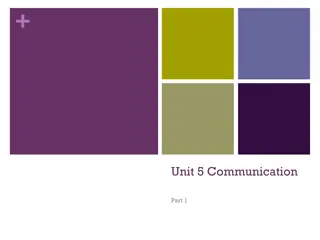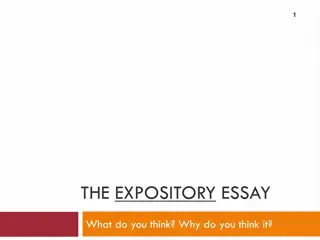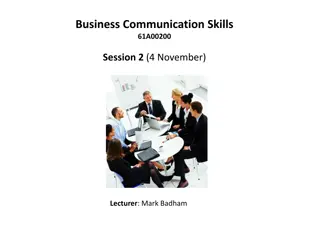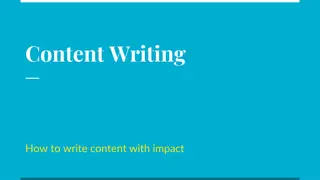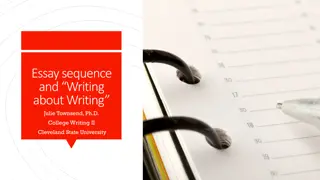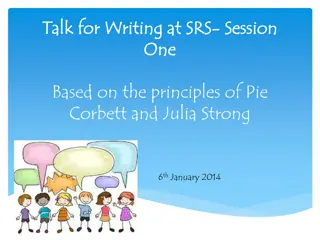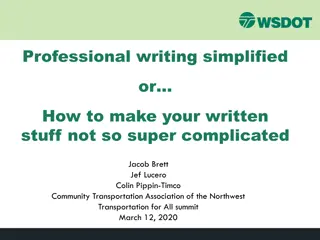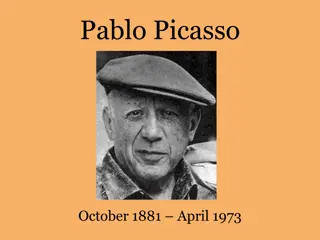Simplify Your Writing for Better Communication
This presentation offers ten ways to enhance the clarity and effectiveness of your writing, including planning, sentence structure, word choice, and proofreading. It emphasizes the importance of thinking about your audience, using simple language, and keeping sentences concise and focused.
Download Presentation

Please find below an Image/Link to download the presentation.
The content on the website is provided AS IS for your information and personal use only. It may not be sold, licensed, or shared on other websites without obtaining consent from the author.If you encounter any issues during the download, it is possible that the publisher has removed the file from their server.
You are allowed to download the files provided on this website for personal or commercial use, subject to the condition that they are used lawfully. All files are the property of their respective owners.
The content on the website is provided AS IS for your information and personal use only. It may not be sold, licensed, or shared on other websites without obtaining consent from the author.
E N D
Presentation Transcript
Simplify Your Writing To Make It More Effective Emma Jane Hogbin Westby Writing Centre Royal Roads University
This presentation presents 10 methods to improve the conciseness of your writing: Planning: 1. Think before you write Sentence structure: 2. Start the sentence with the subject and verb 3. Keep sentences short and focused Word choice: 4. Use simple language 5. Delete non-essential descriptors 6. Delete unnecessary qualifiers 7. Delete redundancies 8. Avoid vague pronouns 9. Check for passive voice Before you submit your work: 10. Proofread
Think before you write Who is your audience? What terminology would your audience use? What do you want your audience to understand? What do you want your audience to do?
Start the sentence with the subject and verb When the subject and verb aren t provided until the end of the sentence (see the first example), it s challenging for the reader to understand the importance of all the preceding information. In the second example, the reader can immediately identify the subject (research) and verb (focus), which helps the reader to understand the direction of the sentence. The sentence is also more concise. Considering the importance of skillful leadership within an organizational context, and especially so during a reorganization, leadership models provide essential information and will therefore be the focus of my research. My research will focus on leadership models that demonstrate the importance of skillful leadership within an organizational context, and especially so during a reorganization. vs.
Keep sentences short and focused General guide for maximum sentence length: 25 words Remember your reader may not be as familiar with the topic as you are Focus on the sentence s main point so it s easy for your reader to know what is important Students were force-subscribed to the library forum and automatically received emails of all posts, which negatively skewed our forum participation data. (22 words) However, one thing we did not initially consider, but that negatively skewed our forum participation data, is the fact that students were subscribed to the library forum in what Moodle calls forced subscription mode, meaning they automatically received emails of all posts to that forum. (45 words) vs.
Use simple language Think about the language your reader would use and make your text easy to understand: When the process of freeing a stuck vehicle that has been stuck results in ruts or holes, the operator will fill the rut or hole created by such activity before removing the vehicle from the immediate area. If you make a hole while freeing a stuck vehicle, you must fill the hole before you drive away. vs.
Delete non-essential descriptors Descriptors: Adverb = a word that describes a verb Adjective = a word that describes a noun I m eagerly looking forward to your thoughtful reply and happily anticipate our next illuminating conversation. I m looking forward to your reply and our next conversation. vs.
Delete unnecessary qualifiers Qualifier: a word (such as an adjective or adverb) or phrase that describes another word or group of words . E.g., very, actually, really, quite, basically, probably, definitely, somewhat, kind of, extremely, practically. Because a great many of the words in this sentence are basically unnecessary, it would really be a very goodidea to edit somewhat for conciseness. I should edit the sentence because many of the words are unnecessary. vs.
Delete redundancies Example redundant pairs: full and complete, each and every, hopes and dreams, first and foremost, true and accurate, always and forever. This was the first time they had ever had a librarian participate in their online courses. First time means never before, therefore ever is redundant This was the first time a librarian participated in their online courses. vs.
Avoid vague pronouns Vague pronoun: Using it , this , that , or other pronouns to refer to a previously-mentioned noun It also likely explains why there is higher uptake in these three specific knowledge areas over others. (What is it ?) This means that forced subscription negates the need for students to go into to the forum to read the content. (What is this ?) The integrated approach also likely explains why there is higher uptake in these three specific knowledge areas over others. This result means that forced subscription negates the need for students to go into to the forum to read the content. vs.
Check for passive voice Active voice: The subject does the action (e.g., Harry loves Sally). Passive voice: The object (the thing that is receiving the action) comes first in the sentence and the subject appears at the end of the sentence or isn t included at all (e.g., Sally is loved). Detecting passive voice: Check the primary verb, and if there s a form of be (e.g., am, is, are, was, were) and a past tense verb (many end with -ed), the sentence may be passive. Why is passive voice a problem? Tends to be wordier May not provide necessary information (e.g., who is the actor of the action?) Training was conducted and participants were evaluated. The trainers provided instruction and evaluated the participants. vs.
Proofread Read your text out loud, slowly enough that someone else could understand you, so that you can hear what you ve written. You ll likely catch extra words, spelling mistakes, wordy sentences, typos, and other errors. Read word-for-word backwards to catch spelling errors. Try Microsoft Word s grammar and style check. Try the Hemingway Editor and/or the Writer s Diet Testfor free, automated feedback on the conciseness of a selection of text. For more information and suggestions, see Editing Tips and Resources.
Questions? http://library.royalroads.ca/writing-centre http://writeanswers.royalroads.ca (250) 391-2600, ext. 4353
